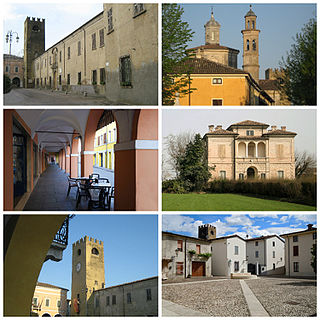
Castel GoffredoItalian pronunciation: [kaˈstɛl ɡofˈfreːdo] is a comune in the province of Mantua, in Lombardy, northern Italy, 35 kilometres (22 mi) from Mantua and a few more from Brescia. It lies in a region of springs at the foot of the slopes that drain into Lake Garda, towards the plain of the Po. Castel Goffredo borders the following municipalities: Castiglione delle Stiviere, Medole, Ceresara, Casaloldo, Asola, Acquafredda, Carpenedolo.

Casale Monferrato is a town in the Piedmont region of Italy, in the province of Alessandria. It is situated about 60 km (37 mi) east of Turin on the right bank of the Po, where the river runs at the foot of the Montferrat hills. Beyond the river lies the vast plain of the Po valley.

Lorenzo Leonbruno, also known as Lorenzo de Leombeni, was an Italian painter during the early Renaissance period. He was born in Mantua (Mantova), an Italian commune in Lombardy, Italy. Leonbruno is most well known for being commissioned by the court of Francesco Gonzaga, Marquis of Mantua, and his wife Isabella d'Este. The patronage continued with their eldest son Federico II Gonzaga, who was the fifth Marquis of Mantua. Leonbruno was the court painter for the Gonzaga family from 1506–24.

The Marquisate or Margraviate of Mantua was a margraviate located in Lombardy, Northern Italy. Placed under the sovereignty of the House of Gonzaga since its erection in 1433, it was further raised to Duchy in 1530.
Gasparo Antonio Turbini was an Italian architect and Jesuit priest, mainly active in a Neoclassical-style in the Province of Brescia, Italy.

Altamura Castle was a castle located in the city of Altamura, now completely demolished. It was located over today's piazza Matteotti and a few remains of it are still visible inside the adjacent buildings, which were built partly with stones and structural elements from the castle. In a warehouse are an ogival arch and some stone coats of arms. A few other remains are found in the adjacent buildings, which were built in the 19th century.

Costante Tencalla was a Swiss-Italian architect and sculptor.
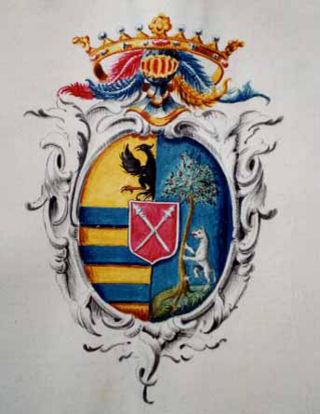
Paride da Ceresara was an Italian humanist, poet, alchemist and astrologer.

Aloisio Gonzaga was an Italian condottiero.

Palazzo Gonzaga-Acerbi is a historic palace in Castel Goffredo in the Province of Mantua in Italy.

Castel Goffredo Town Hall and Loggia della Magnifica Comunità are located in Piazza Mazzini in Castel Goffredo, in the Province of Mantua (Italy). It is the seat of the municipality.
Events in the history of Castel Goffredo, in Italy.

Castelvecchio is the ancient fortified village of Castel Goffredo, in the province of Mantua Lombardy region in Italy, surrounded by walls and a moat. The boundaries currently correspond to the garden of the Palazzo Gonzaga-Acerbi to the north, to vicolo Remoto and vicolo Cannone to the east, to Piazza Mazzini to the south and to piazzetta Castelvecchio and vicolo Castelvecchio to the west.

The Basilika Palatina di Santa Barbara is the Palatine Chapel of the House of Gonzaga in Mantua, Italy.

The Civic Tower is a historic building in the town of Castel Goffredo, in the province of Mantua, Italy.
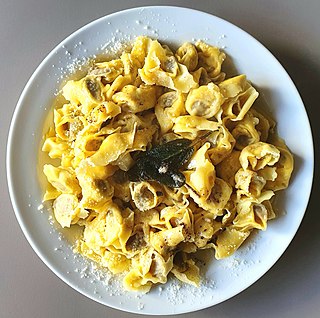
Mantuan cuisine is the set of traditional dishes of the Italian province of Mantua, some of which date back to the time of the Gonzaga.
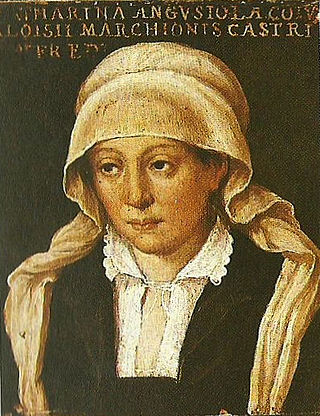
Caterina Anguissola Trivulzio was an Italian noblewoman.
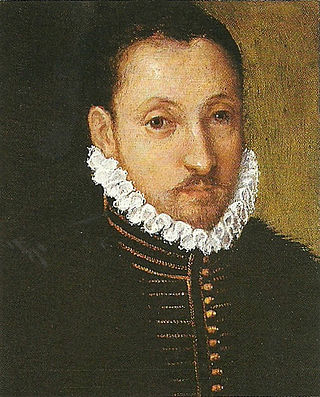
Ferrante or Ferdinando Gonzaga, first marquess of Castiglione was an Italian nobleman and condottiero.
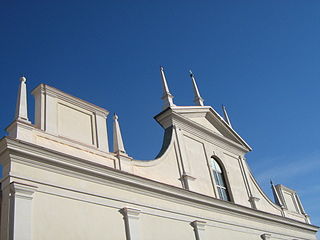
Sant'Erasmo is a Roman Catholic church located in Castel Goffredo, region of Lombardy, Italy.
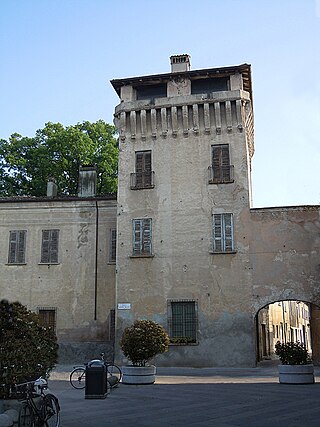
The Torrazzo is a historic building in Castel Goffredo, in the province of Mantua.






















